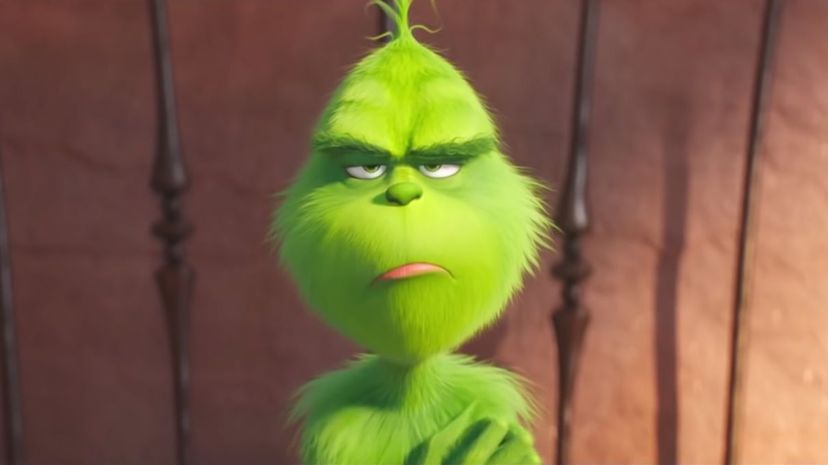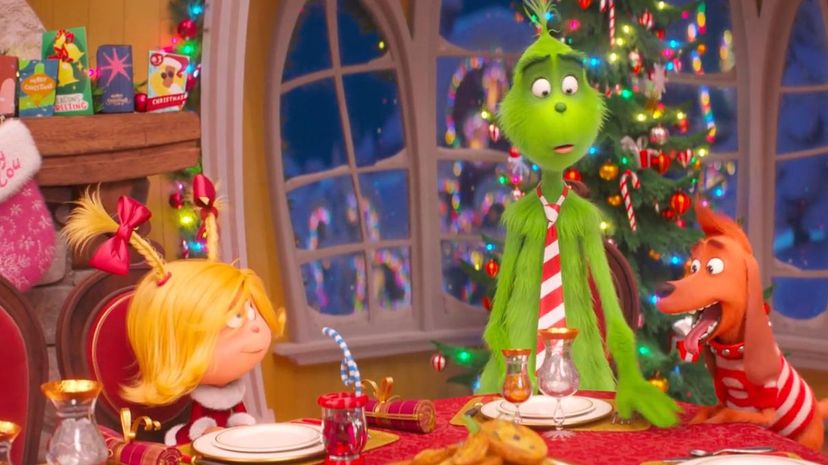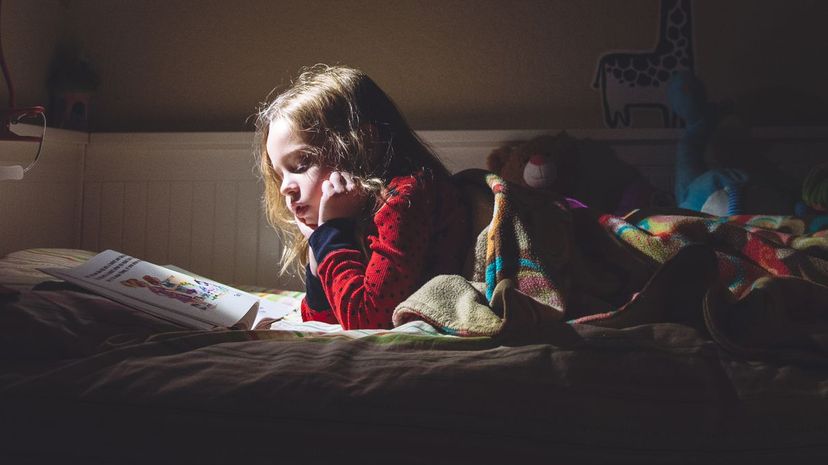
About This Quiz
There are very few children's book authors that seem to make their way into almost everyone's childhood. While there are the likes of Roald Dahl and Shel Silverstein, there is one author that stands out among the crowd. That author is Dr. Seuss. With his masterful use of rhyming and limericks, his books were always a great choice for young readers! That's why he is a formidable part of so many people's youth. Before his death in 1991, Dr. Seuss had written at least forty books.Â
With so many books, it can be hard to keep track of each one! How much do you remember about the stories that Dr. Seuss wrote? Do you know the dog's name in "How the Grinch Stole Christmas"? Or what about the names of the children that dealt with the Cat in the Hat's shenanigans while their mother was away? Whether you read the books as a child or perhaps read them to your own children now, only a true Seuss fan will be able to navigate the questions of this quiz. Will this quiz show you the places you can go? Or will you end up in a lurch and looking besmirched? Take this quiz to find out!

While stealing Christmas presents, the Grinch meets a sleepy Cindy Lou Who. He lies to the little girl and escapes with the gifts. The next morning he discovers that his burglary didn't ruin Christmas for the Whos. As he hears them singing and celebrating, his heart grows three sizes.

Dr. Seuss used to draw racist portrayals of Japanese people. Upon visiting school children in Japan for article research, he had a change of heart and dedicated "Horton Hears a Who!" to a Japanese individual he met.

While his most popular pen name was Dr. Seuss, there were many other names that he wrote under during his career. Some of these included L. Pasteur, Theo LeSieg and Rosetta Stone.
Advertisement

Seuss explains a location in "Oh, the Places You'll Go!" called 'The Waiting Place.' In this part of the book, the author explains how the main character will run into people in their life who are content with waiting around and not moving forward in life.

This book taught such a strong message of tolerance that at one point, NATO was going to translate the story collection, "The Sneetches and Other Stories," into Serbian and Croatian.

Even though it's written simply enough for children to understand, "Mr. Brown Can Moo? Can You?" covers a complex literary device known as onomatopoeia. This is when sounds are spelled out as words.
Advertisement

The authors of the Berenstain Bears series, Jan and Stan Berenstain, were said to have gotten help from Dr. Seuss. Before they published their first book, Seuss recommended that the authors work to connect with their characters more.

The book in question here is "The Foot Book." Upon publication, it was very successful, but its creation was sad. It's said that Seuss created this book in eight-hour working days after his wife, Helen, passed away.

"The Lorax" is one of Seuss's books that faced censorship in certain areas of the country. One school in California, in particular, banned the book because it painted the logging industry in a negative light.
Advertisement

While some children's authors get into the business because they like kids, Seuss was thrown into it based on limitations put upon him by advertising contracts. Writing books for kids was one of the few things that didn't go against his contracts.

In his quest for the best scrambled eggs, Peter gets eggs from exotic birds because he grows weary of chicken eggs. He calls his dish "Scrambled Eggs Super Dee Dooper Dee Booper Special Deluxe a la Peter T. Hooper."

Despite being written for children, "The Butter Battle Book" had quite an impact on the New York Time's bestsellers list. In fact, it was the first book for kids that spent six months on the esteemed list.
Advertisement

One instance of pop culture and Dr. Seuss coming together was with "There's a Wocket in My Pocket." In 2018, a rapper took the beat from Migos' hit "Walk It Talk It" and spoke the words from the popular Seuss book.

As one might expect, "The Cat in the Hat" is Dr. Seuss's most popular book. Quite a few other titles were popular among the masses, and even today, it's said that 25% of American children receive a Seuss book as their first book.

In addition to a few literary awards, Dr. Seuss also won two Emmys. One was for "Halloween is Grinch Night," and the other one was award to "The Grinch Grinches The Cat in the Hat."
Advertisement

"Fox in Socks" is the story of Fox (who is, as the name suggests, a fox) and Knox, who is recognizable by his yellow appearance. Fox speaks only in rhyme, much to the frustration of Knox.

"Gerald McBoing Boing" went beyond Dr. Seuss's pages, as it was turned into a popular short animated film by Phil Eastman and Bill Scott. In 1950, it went on to win an Oscar for Best Animated Short.

While he wrote under the name Dr. Seuss, the author never went to school to be a doctor. It is said he added the doctor on to his name because his father always hoped he would get his doctorate and pursue a career as a professor.
Advertisement

"One Fish, Two Fish, Red Fish, Blue Fish" follows the characters Jay and Kay as they look at all the pets they have, as well as unusual creatures the children have made friends with.

If reading isn't your thing, you can listen to Bob Dylan singing the tale of the Zax. Not the real Bob Dylan, however, but an extremely believable impersonator. The Houston music producer also did the likes of "The Cat in the Hat."

Dr. Seuss was 87 when he passed away in 1991. After a lifetime of heavy smoking, the disease he eventually succumbed to was oral cancer, having been diagnosed with it in the early '80s.
Advertisement

Seuss and his first wife never had children, but that didn't stop the author from having an imaginary child, whom he called Chrysanthemum-Pearl. It was a long-running joke, but her name can even be seen on the family's Christmas cards.

Dr. Seuss' first book for children was "And to Think That I Saw It on Mulberry Street." Finally published in 1937, Seuss had been rejected twenty-seven times before his book was finally accepted.

"If I Ran the Zoo" is the first instance of the word "nerd," which was used to describe an imaginary creature. While it wasn't used in the context it is known for today, Seuss is attributed with creating the word.
Advertisement

Seuss may have discovered his knack for drawing while visiting his dad at work! One of his dad's jobs was managing a nearby zoo, where Seuss would visit and then draw the animals.

Lolla Lee Lou had two tail feathers, whereas Gertrude McFuzz only had one. In an attempt to grow more tail feathers, Gertrude eats too many berries and must deal with the repercussions.

Seuss was known to have a sense of humor. It turns out his phone number was very similar to that of a local fish market, so instead of pointing the callers in the right direction, Seuss would simply send them a rendition of the fish they had been trying to order.
Advertisement

When he wasn't busy writing or creating cartoons, Seuss had a strange collection to keep himself occupied; his collection of hats! It was said that he had several hundred kinds of hats when he died.

Seuss is known for his children's books, but with titles like"The Seven Lady Godivas," he also wrote for an adult audience. In total, he wrote more than forty books in his lifetime.

Seuss had developed and used his pen name long before he came to write children's books. When he was banned from his college magazine, he continued to submit work under Seuss and T. Seuss.
Advertisement

Even though Dr. Seuss has been dead for nearly two decades at this point, he is still changing the literary community. Based on his notes and old illustrations, he will be posthumously releasing a story on September 3, 2019.

The person who approached Dr. Seuss to adapt "How the Grinch Stole Christmas" into an animated special was an old colleague. Chuck Jones and Geisel used to work on animated training videos for the Army.

It was originally Seuss's editor who gave him the inspiration for "Green Eggs and Ham." He bet the writer that he couldn't write a story with less than 225 different words. Seuss used only 50.
Advertisement

While Seuss said that the idea for "Horton Hatches the Egg" came from an elephant drawing getting caught in a tree, it is more likely that it came from one of his previous stories, called "Matilda, the Elephant with a Mother Complex."

While "Yertle the Turtle" did not invent the word, it did use "burp" within its pages. This was controversial at the time, as the word was perceived to be very rude, especially for a children's book.

This was the final story in the collection called "Yertle the Turtle and Other Stories." This particular story was about finding the best animal based on their abilities to hear and smell.
Advertisement